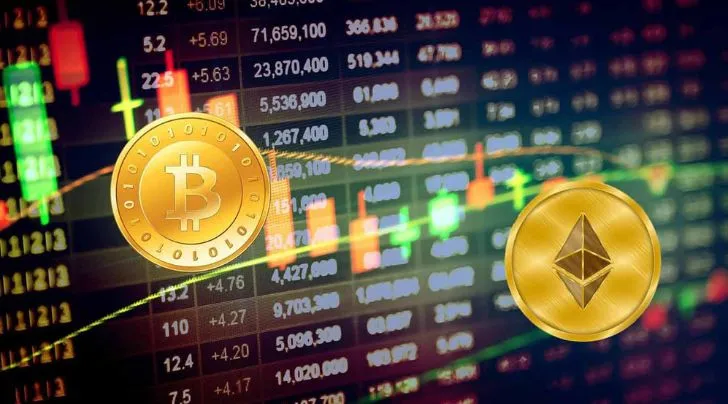WhiteBitcoin (WBTC) – Major Update Announced on June 22, 2025


Web3, or Web 3.0, is the next generation of internet services characterized by decentralized protocols, blockchain technologies, and Coin/token-based economies. It aims to create a more open, transparent, and user-centric internet. Here’s a closer look at what Web3 entails and why it matters:
Key Features of Web3.
Decentralization
Blockchain Technology: Web3 uses blockchain to decentralize control, ensuring no single entity owns or controls the network, unlike the centralized platforms dominating Web2.
Peer-to-Peer Networks: Users interact directly with each other, enhancing privacy and reducing dependency on centralized entities.
Trust and Transparency:
Smart Contracts: These self-executing contracts have terms directly written into code, automatically enforcing and executing agreements, which reduces the need for intermediaries and enhances trust.
Immutable Ledgers: Transactions are recorded on the blockchain in an immutable and transparent manner, ensuring data cannot be altered once added.
User Ownership and Control:
Digital Assets and Coin/Token: Web3 allows the creation and ownership of digital assets and cryptocurrencies, giving users real ownership and control over their digital interactions and transactions.
Decentralized Identity: Users maintain control over their digital identities, reducing the risks associated with data breaches and identity theft.
Economic Incentives:
Coin/Token Economies: Cryptocurrencies and tokens incentivize participation and contributions to the ecosystem, rewarding users for their engagement.
Decentralized Finance (DeFi): Web3 includes a range of decentralized financial services, offering alternatives to traditional financial systems and enabling more inclusive financial access.
Why Web3 Matters
Empowerment and Ownership:
User-Centric: Web3 shifts power from centralized entities to individuals, giving them more control over their data, digital identities, and assets.
Monetization: Creators and users can directly monetize their contributions without intermediaries, leading to fairer compensation models.
Innovation and Inclusion:
New Business Models: Web3 fosters new business models like decentralized autonomous organizations (DAOs) and decentralized applications (dApps) that were not possible under Web2.
Global Access: By removing barriers associated with centralized control, Web3 provides global access to financial services, information, and digital resources.
Enhanced Security and Privacy:
Data Ownership: Users maintain ownership of their data, reducing the risk of breaches and misuse by third parties.
Cryptographic Security: The use of cryptographic techniques enhances security, ensuring secure transactions and interactions.
Reduced Intermediary Costs:
Efficiency: By eliminating intermediaries, Web3 reduces transaction costs and improves efficiency, making processes quicker and more cost-effective.
Direct Interactions: Users can engage in direct transactions and interactions, streamlining processes and reducing overhead costs.
Challenges and Considerations
Scalability: Current blockchain technologies face scalability issues that need addressing to handle large-scale applications and user bases.
Regulation: The regulatory landscape for cryptocurrencies and blockchain is still evolving, posing potential risks and uncertainties.
Usability: Web3 applications often have a steep learning curve, requiring further development of user-friendly interfaces for mass adoption.
Security Risks: While blockchain itself is secure, the surrounding ecosystem (such as smart contracts and dApps) can be vulnerable to exploits and hacks.
Conclusion
Web3 represents a transformative shift in how we interact with the internet, promising greater decentralization, security, and user empowerment. Despite the challenges, the potential benefits of a more open, user-centric, and equitable internet make Web3 a critical development in the digital landscape. As the technology matures, it is likely to have profound implications for various aspects of society, from finance and governance to social interaction and digital content creation

Quick take on the cryptocurrency price on November 15: The worldwide market capitalization fell to $1.36 trillion.
Bitcoin (BTC), the world’s oldest and most valuable cryptocurrency, fell below $36,000 early Wednesday, continuing its recent decline. Even Ethereum (ETH) has fallen below the $2,000 barrier. The annual CPI inflation rate in the United States was 3.2 percent, which was lower than expected. It remains to be seen whether this would help crypto currency in the coming days. Other popular altcoins, such as Solana (SOL), Ripple (XRP), and Litecoin (LTC), have also fallen into the reds.
At the time of writing, the worldwide crypto market valuation was $1.36 trillion, a 2.25 percent drop in a 24-hour period.
Bitcoin Price Today
According to CoinMarketCap, the price of bitcoin was $35,428.64, a 2.87 percent decline in a 24-hour period. BTC was trading for Rs 30.87 lakh on the Indian exchange WazirX.
Ethereum Price Today
At the time of writing, the price of ETH was $1,971.91, representing a 4.05 percent 24-hour drop. As to WazirX, Ethereum price in India stands at Rs 1.72 lakh.
Dogecoin Price Today
DOGE fell 2.99 percent in a 24-hour period, according to CoinMarketCap data, and is now trading at $0.0727. According to WazirX, the Dogecoin price in India is Rs 6.30.
Litecoin Price Today
Litecoin fell 0.93 percent in a 24-hour period. It was trading at $71.30 at the time of publication. In India, the price of LTC was Rs 6,108.18.
Ripple Price Today
The price of XRP was $0.6284 after a 4.87 percent drop in the previous 24 hours. According to WazirX, the current price of Ripple is Rs 54.70.
Solana Price Today
Solana was trading at $56.31, up 3.93 percent in 24 hours. According to WazirX, the SOL price in India is Rs 4,889.96.

On Wednesday, Bitcoin, Ethereum, and other cryptocurrencies rose. The worldwide crypto market valuation was $1.05 trillion, with approximately $33 billion in volume in the previous 24 hours.
Bitcoin
Bitcoin, the world’s largest and most popular virtual currency, gained 0.2 percent to $26,027.6. Its market capitalization was $503.7 billion. The total value of trade was $13.8 billion.
Ethererum
Ethererum is the second largest virtual currency, rose 0.4 percent to $1,746.3, with a market capitalisation of $209.5 billion. In the last 24 hours, the trade volume of Ethereum was $6 billion.
Dogecoin
A meme-based virtual currency, gained 0.7 percent on Wednesday. Its market capitalization was $8.7 billion. The total trade volume was $202.7 million.
Solana
Solana dropped 0.1 percent to $15.2, with a market cap of $6.1 billion. Solana’s transaction volume in the last 24 hours was $354.7 million.
Shiba Inu
Shiba Inu market capitalisation declined by 2.3 percent to $4 billion. In the last 24 hours, the transaction volume was $88.7 million.
Polygon
Polygon gained 1.7 percent to $0.6, giving it a market value of $6.1 billion. In the last 24 hours, the transaction volume was $400.6 million.

The price of Bitcoin, the world’s largest cryptocurrency, was hovering around Rs 19.57 lakh, with its dominance at 41.54 percent, a 0.03 percent increase over the day.
Major cryptocurrencies were trading in the red early on February 6, with the global crypto market cap falling 1.60 percent to $1.60 trillion in the previous day. Over the last 24 hours, the total crypto market volume has increased by 26.61 percent to $48.38 billion.
The total volume in DeFi is currently $5.32 billion, accounting for 11% of the total 24-hour volume in the crypto market. The total volume of all stable coins is now $41.93B, accounting for 86.65% of the total 24-hour volume of the crypto market.
According to Coinmarketcap, the price of Bitcoin, the world’s largest cryptocurrency, was hovering around Rs 19.43 lakh, with its dominance at 41.54 percent, an increase of 0.03 percent over the day.
In other news, the pandemic and a volatile crypto market have fueled a digital currency trading frenzy. And now, luxury rehab centres promising to treat “crypto addiction” are springing up all over the world.


A quick look at the cryptocurrency price on January 9: On Sunday morning, the global crypto market cap was $822.98 billion.
On early Sunday morning, Bitcoin (BTC) and Ethereum (ETH), two of the most valuable crypto coins, surpassed the $16,000 and $1,200 marks, respectively. Other popular altcoins, such as Dogecoin (DOGE) and Ethereum (ETH), also fell as overall prices fell slightly. The Cronos (CRO) token was the biggest gainer, gaining more than 2.59 percent in a 24 hour period. The Sandbox (SAND), on the other hand, proved to be the biggest loser.
At the time of writing, the global crypto market cap was $822.98 billion, representing a 0.24 percent 24-hour loss.
Bitcoin price today
According to CoinMarketCap, the price of bitcoin was $16,939.35 after a 0.08 percent loss in the previous 24 hours.
Ethereum price today
At the time of writing, the price of ETH was $1,261.99, representing a 24-hour loss of 0.43 percent.
Dogecoin price today
According to CoinMarketCap data, DOGE has lost 1.06 percent in the last 24 hours and is currently trading at $0.07174.
Litecoin price today
Litecoin lost 0.63 percent in a 24-hour period. It was trading at $75.65 at the time of writing. In India, the price of LTC was Rs 6,410.00.
Ripple price today
The price of XRP was $0.3414 after a 0.57 percent loss in 24 hours.
Solana price today
Solana’s price was $13.31, down 0.03 percent in 24 hours.
Disclaimer: Crypto products and NFTs are unregulated and can be extremely dangerous. There may be no regulatory recourse for any losses incurred as a result of such transactions. Cryptocurrency is not legal tender and carries market risks. Before making any type of investment, readers should seek expert advice and carefully read the offer document(s) as well as related important literature on the subject. Cryptocurrency market predictions are speculative, and any investment made is solely at the readers’ expense and risk.